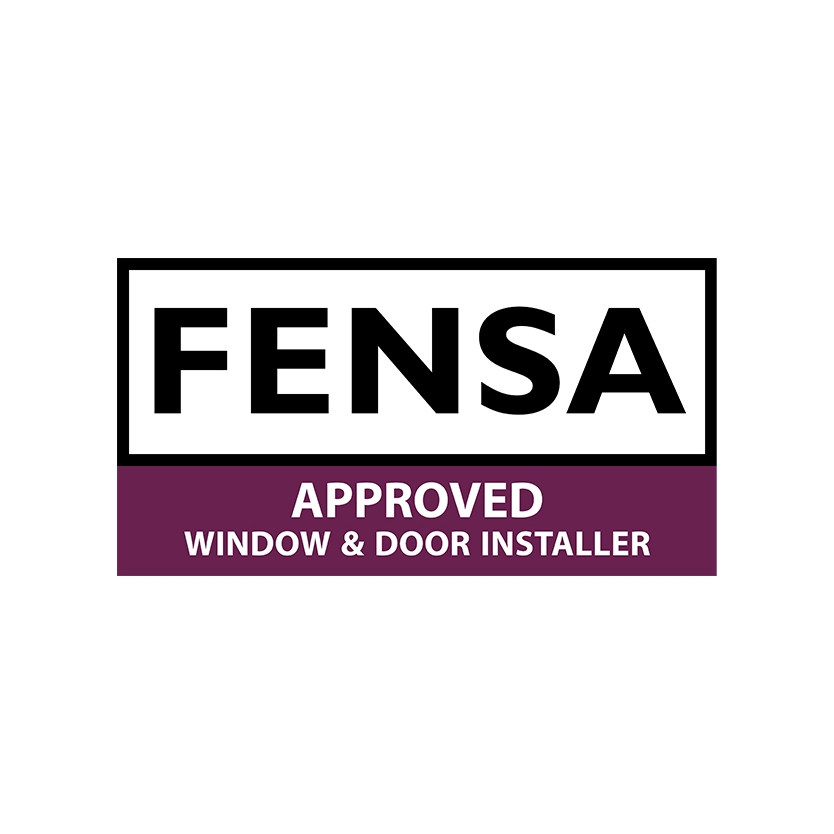
Timber - PVC - Aluminium - Windows, Doors & Conservatories in Hampshire
S.T.C. Ratings & PVB Interlayers: How Acoustic Glass Technology Stops Noise
S.T.C. Ratings & PVB Interlayers: How Acoustic Glass Technology Stops Noise
Noise pollution is more than just an annoyance; it’s a source of stress that compromises your home’s comfort and value. While standard double glazing is designed to trap heat (u-value), it often fails to adequately block sound waves. The reason? Noise is vibration, and uniform glass panes vibrate easily in response to sound, allowing street traffic and loud conversations to pass through.
The solution lies in Acoustic Glass Technology, a specialized type of laminated glass engineered not just to block, but to dampen and dissipate sound energy. This article explains the science behind the technology, focusing on the core components that create true sound insulation.
Table of contents
The Core Technology: Laminated Acoustic Glass
Acoustic glass is fundamentally different from standard float or safety glass due to one critical component: the interlayer.
PVB Interlayer (The Secret Weapon)
The most effective acoustic glazing relies on a specialized layer of Polyvinyl Butyral (PVB), often referred to as a viscoelastic film. This interlayer is sandwiched between two panes of glass under immense pressure and heat, creating laminated glass.
How the PVB Interlayer Dampens Sound:
How it works: When a sound wave strikes the outer pane, it creates vibrations. Before those vibrations can pass to the inner pane, they must travel through the PVB layer. The PVB’s viscoelastic nature allows it to absorb the vibrational energy, converting it into trace amounts of heat that are instantly dissipated. This damping effect significantly reduces the sound transmitted through the glass.
LSI Keywords: You can customize the level of soundproofing by adjusting the PVB interlayer thickness (often 0.38mm or 0.76mm) and using a specifically formulated acoustic PVB.
Asymmetric Glazing and Air Gaps
The structure of the window unit is just as important as the PVB layer itself.
- Asymmetric Glazing: This is the practice of using two glass panes of different thicknesses (e.g., a 6mm outer pane and a 4mm inner pane). The reason is simple physics: different thicknesses have different resonance frequencies. By ensuring the panes are not the same thickness, you prevent the entire unit from vibrating uniformly, thereby minimizing sound transmission.
- Air Gap: In an Insulating Glass Unit (IGU), the gap between the two panes also helps. While a narrow gap is sufficient for thermal insulation, a wider gap (ideally 16mm or more) is always better for noise reduction, especially for lower-frequency sounds like traffic.
Measuring Performance: STC and OITC Ratings
When comparing soundproof windows, thickness and PVB are important, but the definitive measure of performance is the official rating system.
Understanding Sound Transmission Class (STC) Ratings
The Sound Transmission Class (STC) rating is the single-number metric widely used to measure how effectively a building partition attenuates airborne sound.
STC Ratings: Sound Reduction Performance
| STC Rating | Performance Description | Typical Sound Heard |
|---|---|---|
| STC 25-30 | Minimal reduction (Standard single pane) | Normal speech is easily understood. |
| STC 35-40 | Moderate reduction (Standard double-glazing) | Loud speech heard but not intelligible; loud traffic is a murmur. |
| STC 40+ | High-performance (Acoustic Laminated IGU | Loud sounds (traffic, music) are only faintly heard. |
| STC 50+ | Excellent (Specialised architectural glazing) | Provides solid sound isolation; often only very loud industrial noise is faintly audible. |
- Measurement: STC is measured in decibels dB based on standardized testing (ASTM E413) across a frequency range of 125 Hz to 4000 Hz. This range is highly relevant for blocking typical sounds like human speech and household noise.
- The Scale: STC number signifies a better performance in sound insulation. The scale is logarithmic—a difference of 10 STC points means a 50% reduction in perceived loudness.
A Note on OITC (Outdoor/Indoor Transmission Class):
While STCis crucial, the Outdoor/Indoor Transmission Class (OITC) is often a better measure for exterior windows, as it focuses more on the lower-frequency sounds that dominate traffic and aircraft noise (typically below 125 Hz). If you live near a busy road, always check the OITC rating alongside the STC rating.
Authority Flow: Choosing the Right Acoustic Solution
Understanding the technology—from the sound-dampening PVB interlayer to achieving optimal STC ratings—is the first step toward reclaiming your quiet home.
The next step is applying this knowledge to your specific situation, determining the right glass and frame combination to achieve your desired decibel reduction. The effectiveness of the glass is only as good as the seal and the frame surrounding it.
For a permanent solution to soundproofing your home, exploring all your acoustic glass options in Hampshire requires an expert consultation.
To explore all your high-performance soundproofing window options and see which STC ratings our products achieve, visit our main guide.
Frequently Asked Questions
Yes, especially if you live in a high-noise area. Standard double glazing is designed primarily for thermal efficiency (U-value). Acoustic glass is designed specifically for decibel reduction using the internal PVB interlayer. While the initial cost is higher, the investment provides a superior quality of life and better long-term property value in urban or high-traffic settings.
No, the maintenance is generally the same as standard double glazing. The laminated PVB layer is protected inside the unit and does not affect cleaning. You should use a simple soap and water solution to wipe the exterior glass and perform occasional lubrication of the hinges and locking mechanisms.
They work differently. Acoustic Glass uses technology—specifically a laminated PVB film—to *dampen* sound waves as they pass through the glass pane itself. Secondary Glazing works by using an extremely large, separate air gap between the existing window and the new internal pane. The large gap “decouples” the two panes, offering maximum noise reduction, and is often preferred for listed or heritage properties.
Yes, but you need the right specification. Low-frequency noise requires specialized mass and air gaps. Look for glass units with a high OITC (Outdoor/Indoor Transmission Class) rating, as this metric focuses on those lower frequencies. Units incorporating thicker PVB interlayers and using asymmetric glazing (different glass thicknesses) are highly effective at disrupting long, low-frequency sound waves.
📚 Further Reading and Technical Resources
For those looking to dive deeper into the science of sound transmission and noise reduction standards, the following resources provide additional technical insight:
- ASTM International: Standard setting body for STC (Search ASTM E90 and E413).
- Laminated Glass Manufacturers: For detailed data on the performance of PVB films and acoustic interlayers (e.g., Saflex Acoustic – Superior Noise Reduction for Architectural Glass).
This video provides a great visual explanation of why STC ratings are the critical metric to look for when choosing soundproofing materials: Why STC Ratings Are Critical When Soundproofing
- Certified Fire Doors: The Firecore Collection - 15 January 2026
- Premium Hardware for Profile 22 Doors: Ultion Sweet & Fab&Fix - 15 January 2026
- 2026 Design Trends: The 4 Window & Door Styles Defining the Year - 19 December 2025














